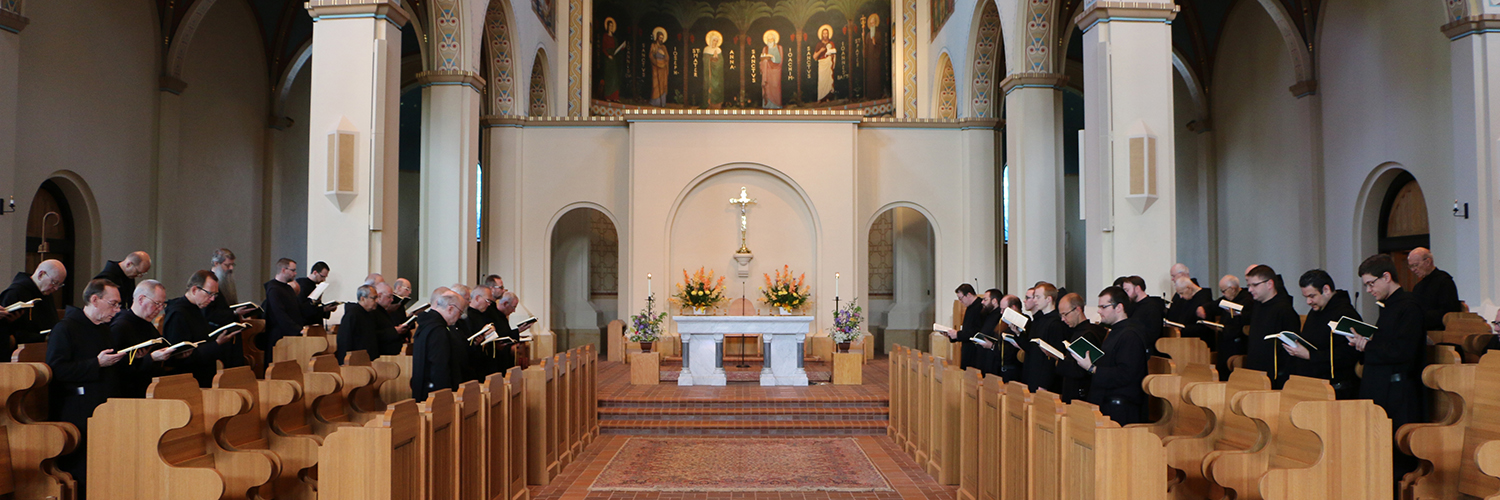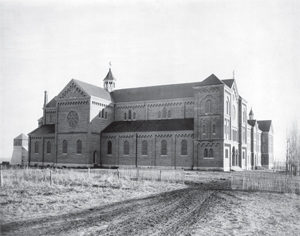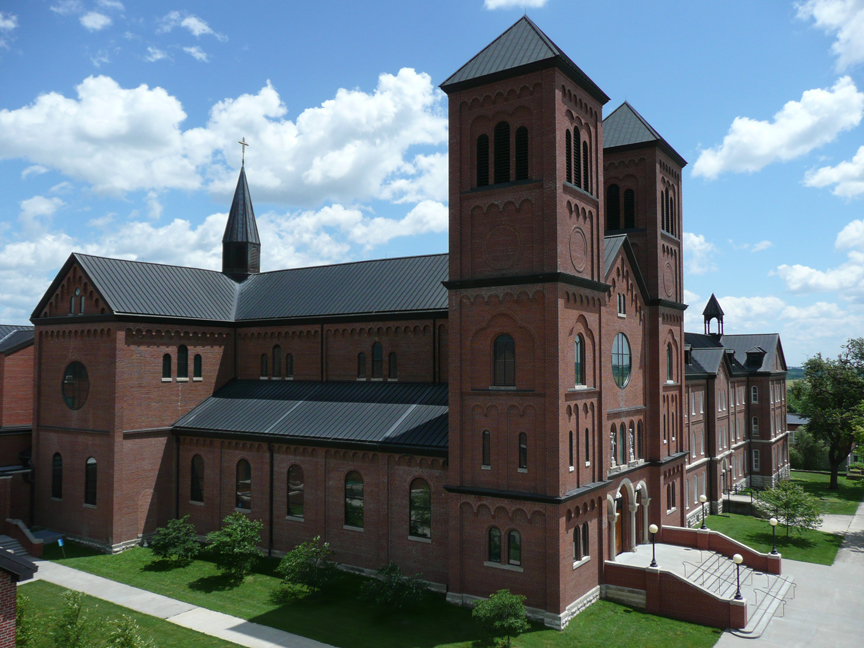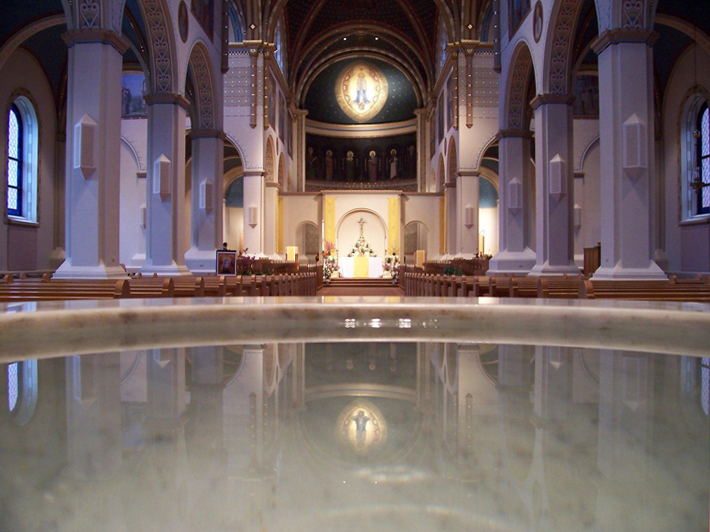
History of the Basilica of the Immaculate Conception
“A church as dignified as possible, a monastery simple yet solid.”
 With these words, founder Abbot Frowin Conrad conveyed his vision of what would become Conception Abbey.
With these words, founder Abbot Frowin Conrad conveyed his vision of what would become Conception Abbey.
Abbot Frowin and seven novices arrived in 1873 from Engelberg, Switzerland, to establish a monastic community in the hills of Northwest Missouri. Called originally to serve the needs of Irish and German settlers, the monks of Conception continue that tradition today as pastors, chaplains, teachers, scholars, musicians and artisans. At the center of it all is the “dignified” church that so captured the mind and heart of Abbot Frowin.
The abbot intended the Abbey Church of Conception to express the spiritual purpose of Benedictine monastic life. He called it a “center of prayer, where God would be praised and glorified as the Lord of heaven and earth, thus calling down abundant blessings upon the people both near and far.”
The architecture of the new monastery and church was vital to Abbot Frowin and he took an active role in their design. Believing that the style of a building influenced the values of the people inside it, he insisted that an authentic Romasesque style best suited the monastic value of simplicity. While most Benedictine monasteries in Germany and Switzerland were built in the more decorative Baroque style, Abbot Frowin’s decision to return to the older Romanesque style indicated that Conception would seek a more classical Benedictine spirituality.
By 1880 the monks had completed the first wing of the monastery, and on Trinity Sunday, May 20, 1883, the cornerstone of the church was laid. But soon construction was sidetracked when the need for a school took precedence over finishing the church.
In the ensuing six years a determined Abbot Frowin made several fund-raising trips through Europe, secured funds from local farmers and arranged for a loan from a Swiss abbey to finish the church.
Brother Adrian Wewer, a Franciscan friar from Illinois, was hired as the primary architect and construction on the church resumed April 24, 1889. A short three years later, through the joint effort of local farmers, monks and contractors, the church was finished. It was dedicated on May 10, 1891.
A tornado struck the church two years later, but the monks turned disaster into opportunity. During reconstruction, they added the now-famous Beuronese murals that feature the lives of Jesus, Mary and Sts. Benedict and Scholastica.
In 1941, on the 50th anniversary of its dedication, Pope Pius XII designated the church of Conception Abbey a minor basilica, an honorary title reflecting its dignity, historical significance and importance as a spiritual center. It was the first basilica west of the Mississippi River.
In 1999 Conception Abbey completed a $9 million Basilica renewal project that spanned two decades and resulted in the Basilica you see today.
At the beginning of the twentieth century, Abbot Frowin reflected on the importance of the church that started as a simple dream. His words ring true today:
“Now there stands a temple in which the all-highest God might receive the honor due him and the people their needed blessings. In this holy place, dedicated to the Virgin conceived without the stain of sin, the divine services can be celebrated in a worthy fashion and the sacred liturgy can unfold in its full splendor the great mysteries of our religion.”
[row]
[column lg="6" md="6" sm="6" xs="12" ]

[/column]
[column lg="6" md="6" sm="6" xs="12" ]

[/column]
[/row]
